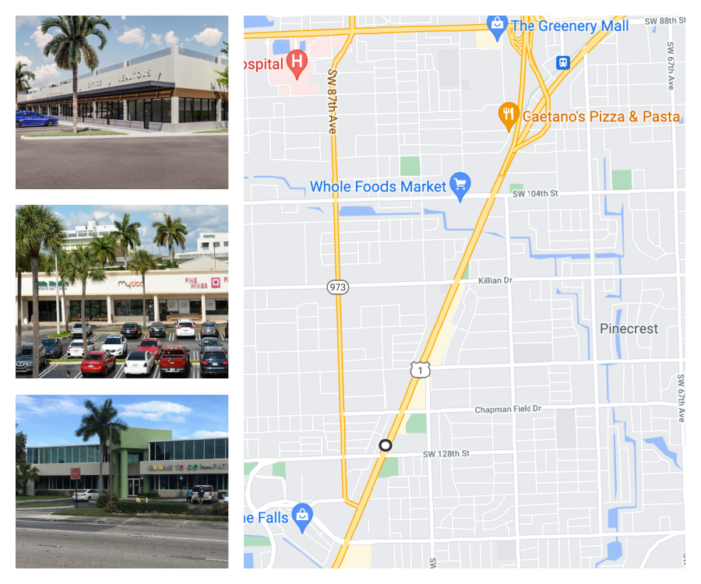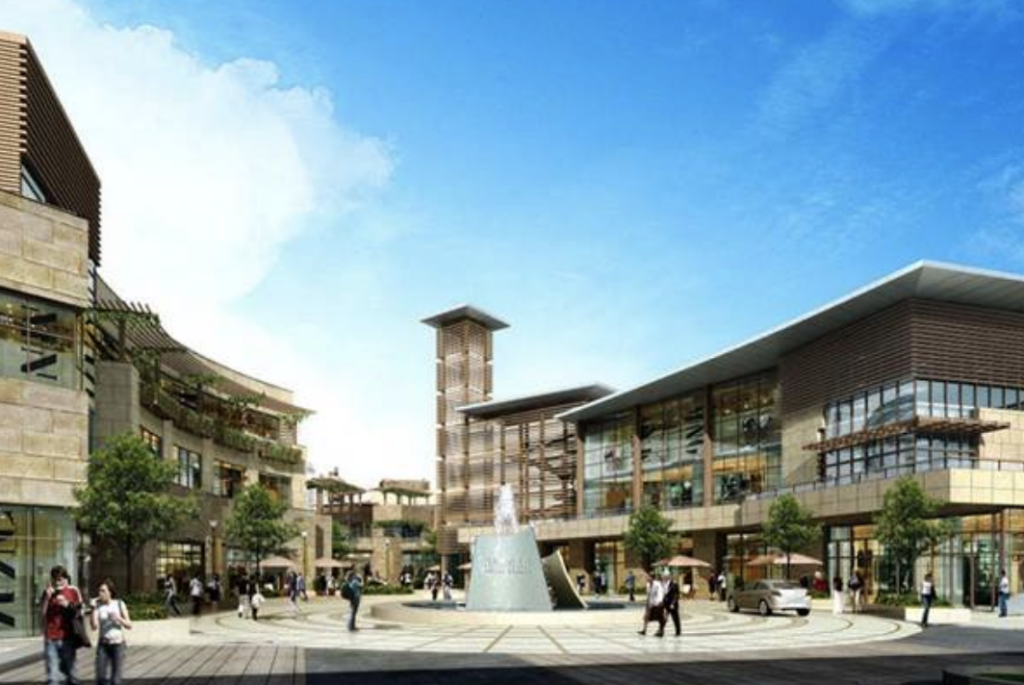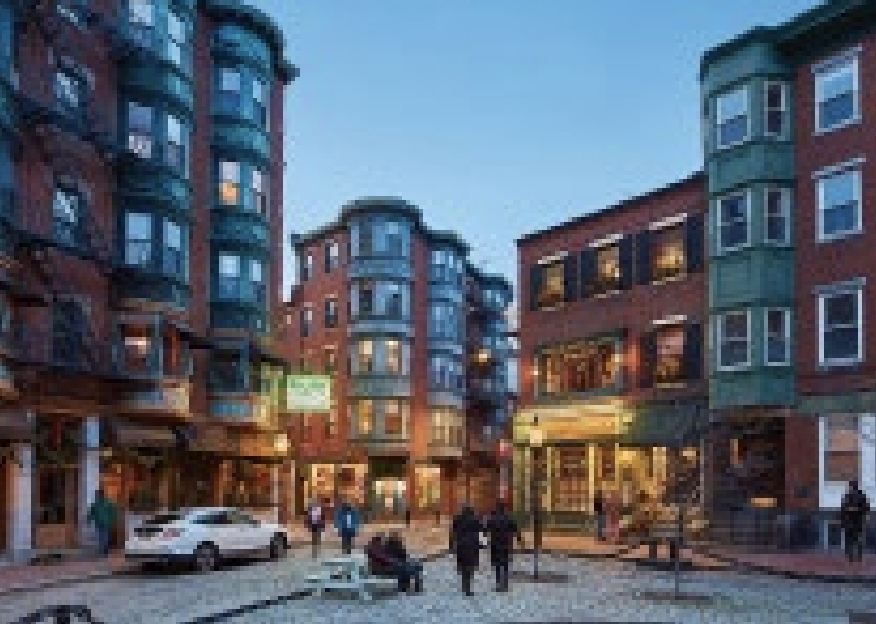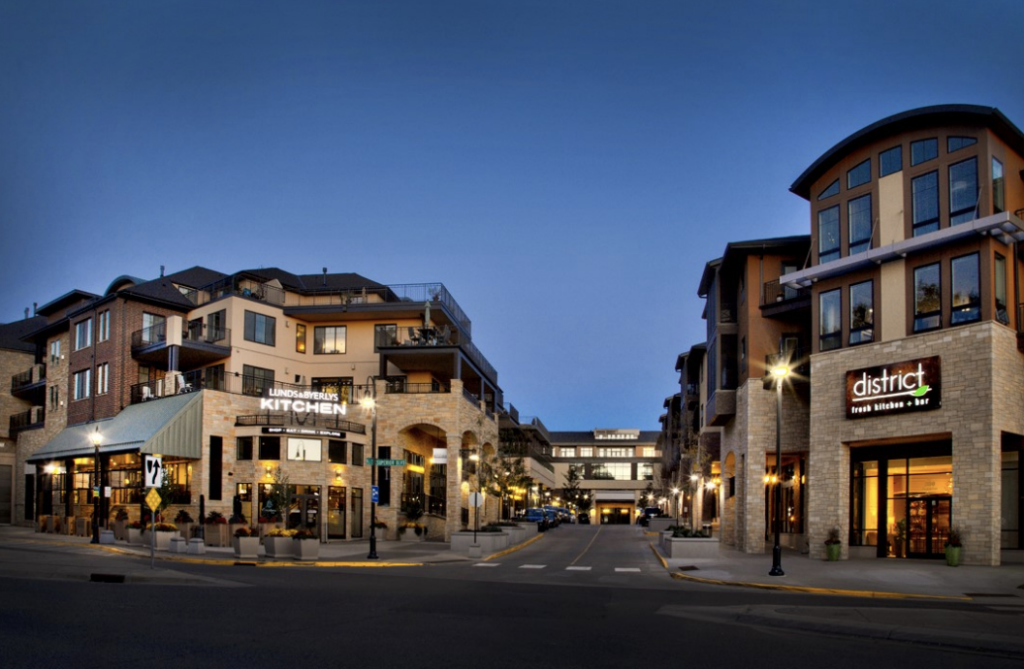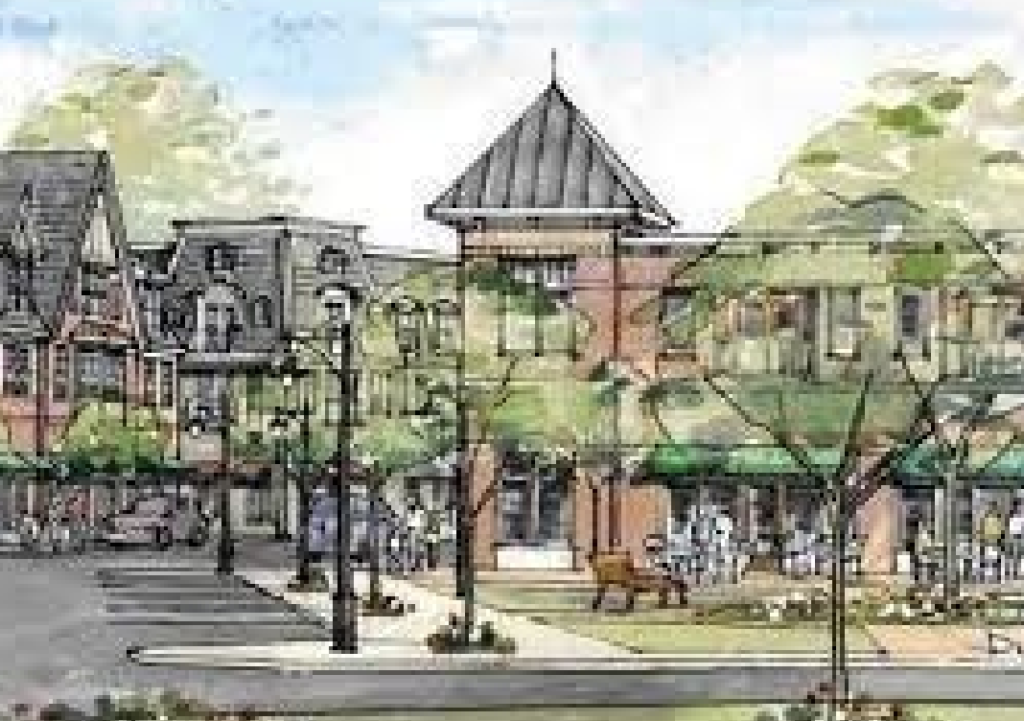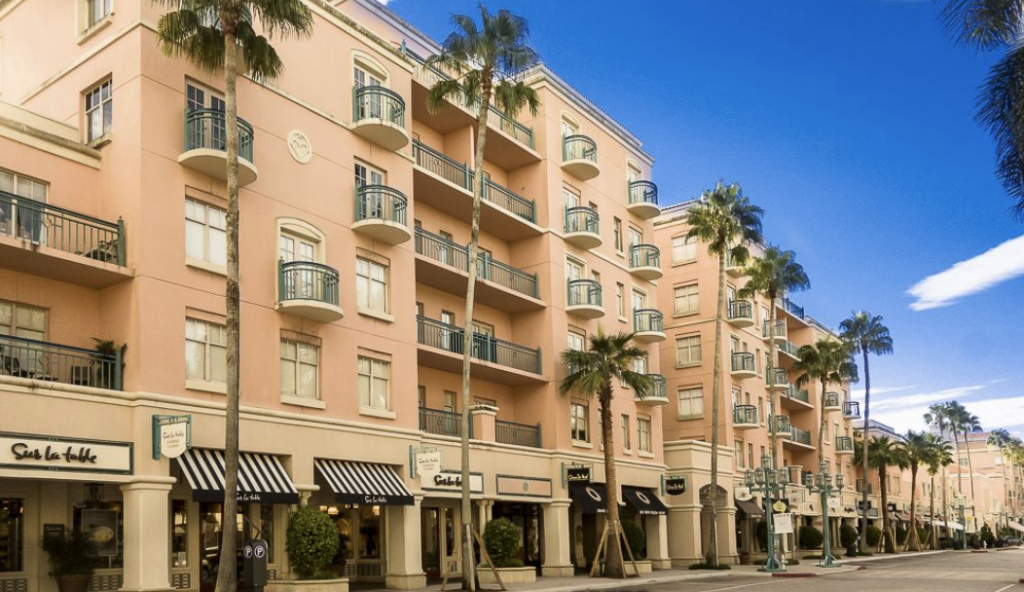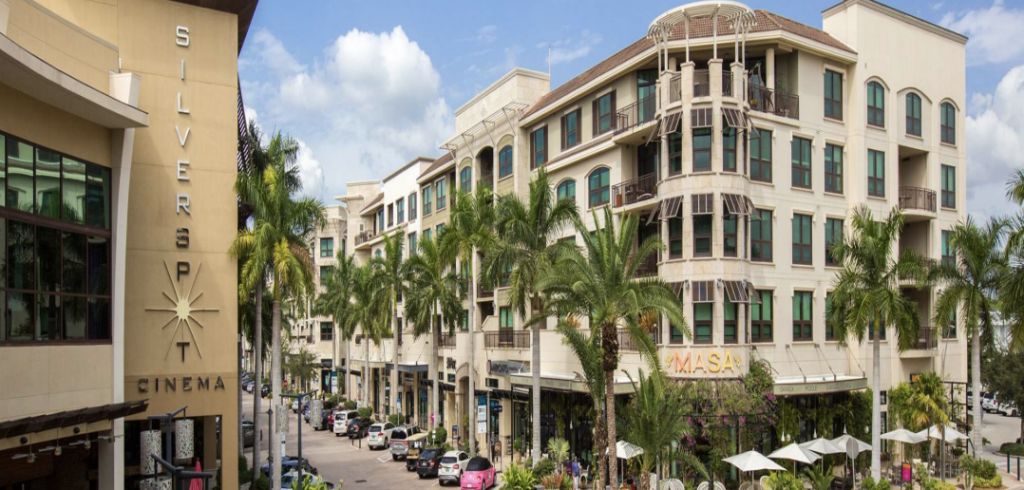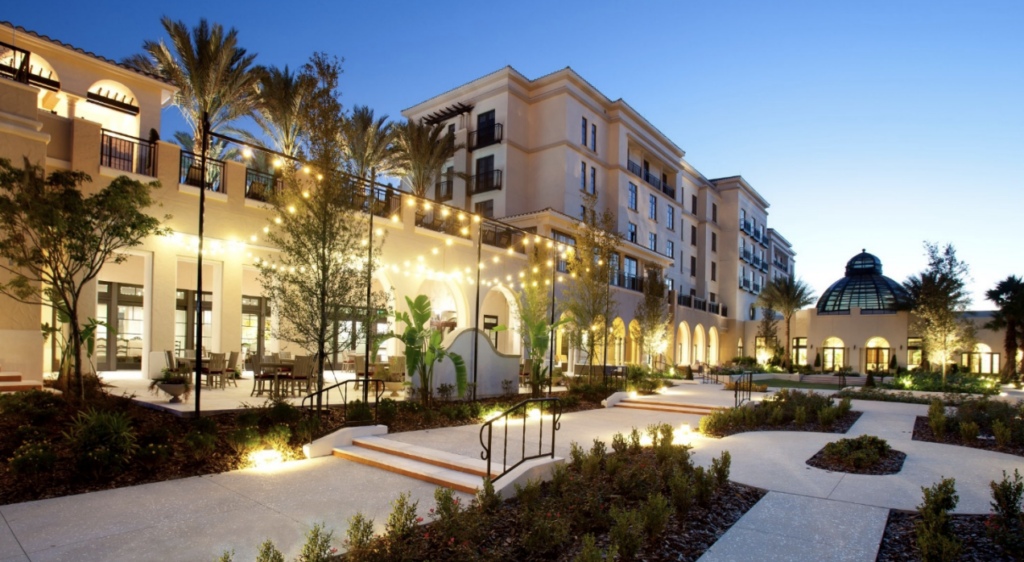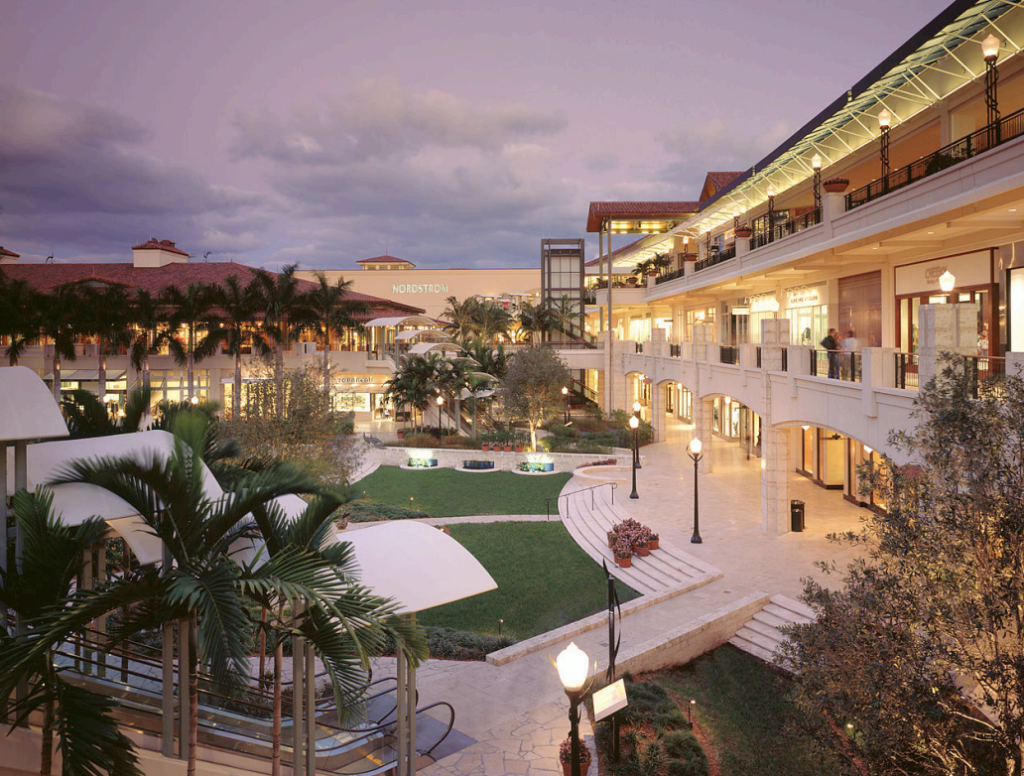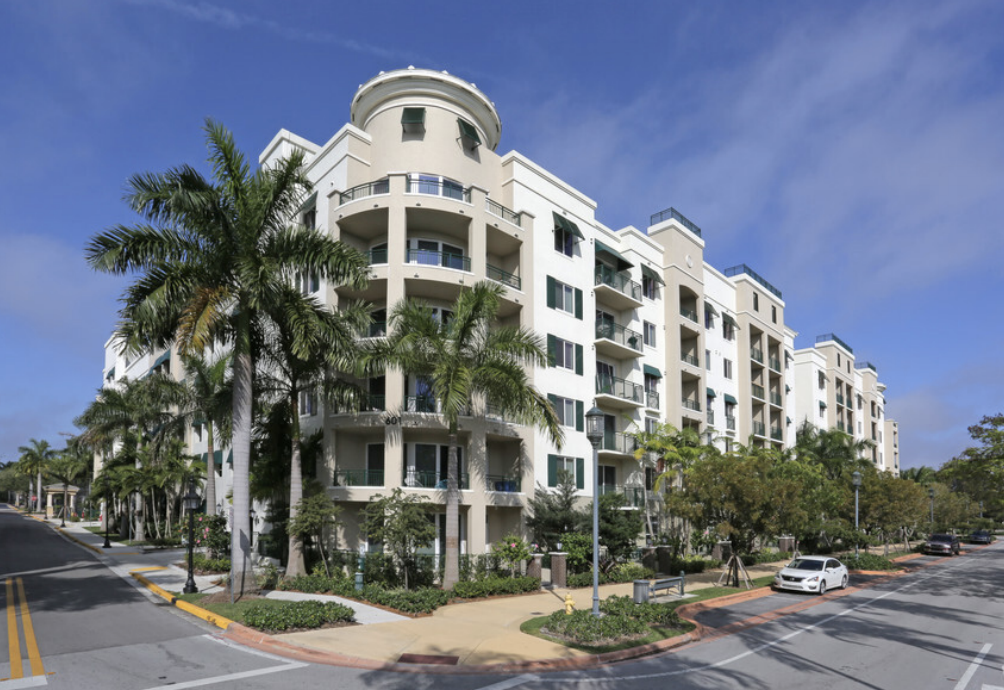Town hall focus: Rapid transit zoning density and height increases
A group of Pinecrest residents are riled up about a plan that proposes increases in heights and density along the eastern side of U.S. 1, across from where Miami-Dade County plans to build two rapid bus stations.
But village officials say they’re worried about nada, that Pinecrest is not Coral Gables, which has allowed some developers to build up to the sidewalk on U.S. 1, and that the proposed changes — an update to the 2012 Pinecrest Parkway Vision Plan — are in line with both the character of the small suburban municipality and the county’s desire to build more residential along transit lines, in the hopes it translates to use.
Thursday’s town hall is another in a series of meetings meant to inform the public about the proposed changes and, it seems from the language used by Village officials, convince them that it’s the best path forward. On Monday, the council will have a workshop and could make more changes depending on the feedback they get. The final vision plan could be adopted Feb. 8.
Read related: Palmetto Bay Council denies Village Center plan to build 485 homes, retail
Pinecrest Mayor Joseph Corradino said the update is not necessarily a response to Miami-Dade Commissioner Oliver Gilbert‘s pending legislation to force rapid transit zoning down cities’ throats, because it began a few months before The Bowtie started talking about this last April. Even though the “community conversations” weren’t until October.
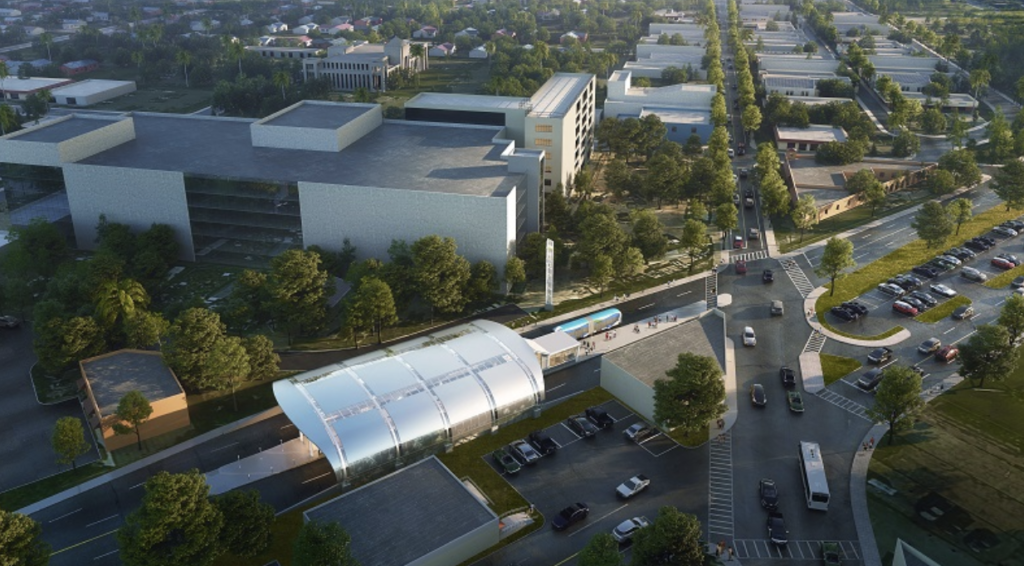
Corradino is also president of the Miami-Dade League of Cities, which has, naturally, pushed back. “Hopefully we can find an alternative and keep our autonomy,” Corradino told Ladra Wednesday. This plan could be one of those alternatives that creates just enough density without going as far as, perhaps, the county would.
Read related: Coral Gables Commission has workshop on development along U.S. 1 corridor
“We are always looking for diversity in the housing stock, looking for places where our population can really age in place,” Corradino said, adding that U.S. 1 — which right now is kind of “strip-mallish” — became a natural option. Especially after a study revealed that Pinecrest residents go elsewhere to shop: Dadeland, South Miami, Coral Gables. They want more shopping and dining options, public plazas and outdoor cafés, close by.
According to a Village Council workshop last week, the most significant proposed change from the 10-year-old plan is the expansion of the North Pinecrest Business Overlay District, which allows commercial property owners across the Metrorail South and North stations build mixed-use developments that include retail, office and residential uses. According to the draft plan on the Village website, it grows to the east and south.
The Village is also looking at duplicating the overlay at the intersections at 104th and 136th Streets, where the county plans to build the to RBT stations.
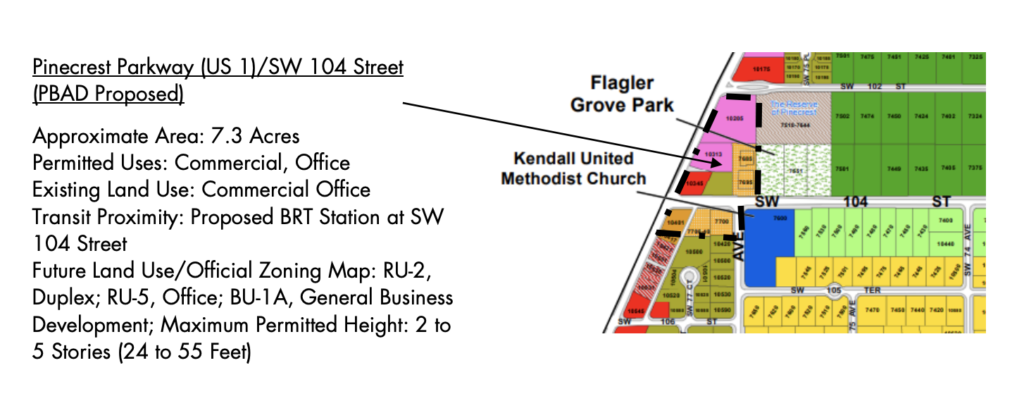
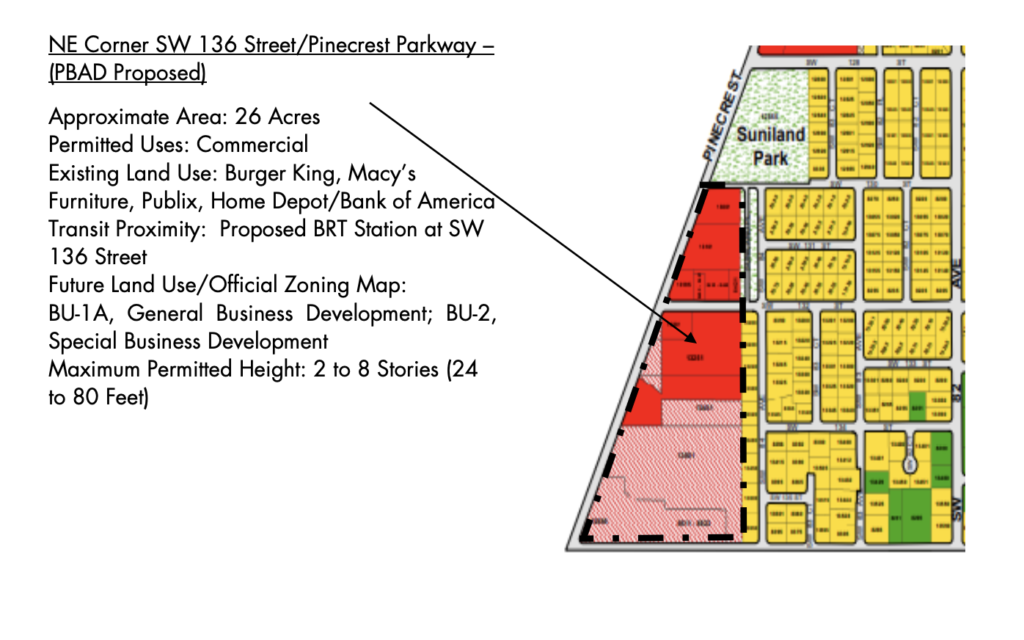
That would allow heights to go from four to eight stories — even though the pushback might bring it down to six, which is the maximum recommended by staff. And it would allow for multi-family residential density of 25 units per acre, which some people think is too high but is not as much as the 55 units per acre contemplated for Palmetto Bay’s RBT overlap zoning or 125 units per acre proposed for the western unincorporated county side. There are already areas of Pinecrest that are zoned for 50 units per acre.
So maybe it’s not so far-fetched that some residents feel this could be a bait-and-switch that will set a precedent and let development creep into other residential neighborhoods. Some critics, calling themselves Concerned Citizens of Pinecrest, have gone as far as to threaten a recall against Corradino, who they say promised to maintain the village zoning and has changed his tune to please developers. They suggest a conflict of interest because Corradino owns a transportation planning firm.
Both the mayor and Village Manager Yocie Galiano say there are no projects in the pipelines and no developers on the sidelines waiting for the green light. In fact, Galiano added, not one project has been proposed for the North Pinecrest Business Overlay District since formed in 2012.
Read related: WaWa Whaaaat? Coral Gables to get gas station across from elementary school
“We’re simply trying to create a look going forward 20, 30 40 years, that will resolve a lot of issues and enhance and protect the village character,” Galiano told Ladra, adding that the vision plan, if approved at the Feb. 8 meeting, would be just a plan. Actual zoning changes would then have to be prepared by staff and go through the public hearing process.
The following photographs are from the village presentation and shows projects in Coral Gables, Naples and other cities that are acceptable examples of what they want.
Corradino said he has no conflicts and that this “isn’t an overreach.
“People are resistant to change in the first place and there is a lot of misinformation,” the mayor said. “That is what this meeting [Thursday] is about. When I talk to people about the facts, they are much more receptive.”
He is supporting some change as a protection against multi-family development creeping into neighborhoods. “To put the threat of commercial intrusion behind us, we can push the residential out to the commercial area,” he told Ladra, adding that the heights would be tapered with the tallest buildings between the corridor front and the single family zone to the east.
“I understand that height is a controversial topic,” he said. “But it’s a trade-off. With a little bit of height, you get more things,” like green space and setbacks, Corradino explained.
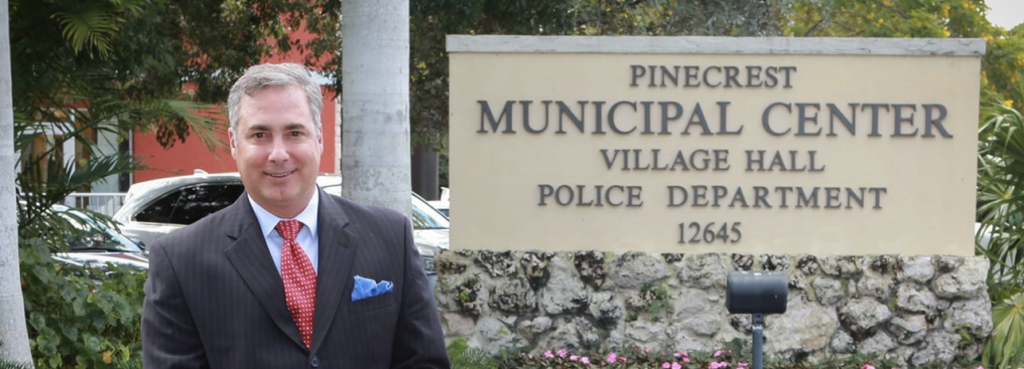
“The county is making a $300 million investment in rapid transit. We are part of Miami-Dade and the right thing to do is support rapid transit,” Corradino said.
“Otherwise, it could look like it’s just the rich people saying ‘I’m not going to play with you.'”
Proposed changes to the US 1 Vision Plan will be presented to the rich people, er, community at an in-person town hall meeting at Pinecrest Gardens in the Banyan Bowl at 6 p.m. Thursday, January 27. Galiano said a virtual meeting could not be accomodated because of the location — chosen so people can socially distance — but that there will be a video posted later on the village website.
That’s also were the videos of the past meetings are and the latest draft of the Pinecrest Parkway Vision Plan can be reviewed.

